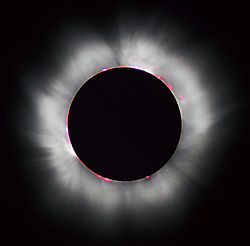 I’ve been thinking a lot recently about a new book, Dreaming in Dark Times: Six Exercises in Political Thought, by Sharon Sliwinski, a professor at the University of Western Ontario in Canada. Sliwinski approaches dreaming as a powerful resource for political theory and action, especially in times when basic human freedoms are most at risk. That we today are living in such times has become impossible to ignore.
I’ve been thinking a lot recently about a new book, Dreaming in Dark Times: Six Exercises in Political Thought, by Sharon Sliwinski, a professor at the University of Western Ontario in Canada. Sliwinski approaches dreaming as a powerful resource for political theory and action, especially in times when basic human freedoms are most at risk. That we today are living in such times has become impossible to ignore.
But throughout history, in times of collective crisis, people’s dreams have often responded with a surge of imagery, emotion, and insight that help people respond more effectively and creatively to the pressing challenges facing their group in waking life. This is also true in the modern era, as Sliwinski’s fascinating and beautifully written book makes clear.
As she explores the political sociology of the dreaming imagination, Sliwinski’s main guides are Sigmund Freud (as interpreted by Michel Foucault) and Hannah Arendt. It is the deep dive into Arendt’s philosophy that gives Dreaming in Dark Times its inspiring vision and potent timeliness. Arendt was a twentieth-century political theorist born in Germany who fled the Holocaust in World War II and lived in the United States until her death in 1975. Her writings focused on such topics as totalitarianism, freedom, authority, and revolution. Sliwinski draws her book’s title from Arendt’s notion of “dark times,” which Sliwinski describes as follows:
“Dark times are turbulent political moments in which the public realm has been infected with a kind of black light… [Arendt] marked these eras by a certain kind of suppression of speech and public declaration, and simultaneously, by an all-too-public display of evildoing. In dark times, social and political violence is both overtly visible and yet oddly difficult to recognize… She noticed that human speech becomes divested of its power to represent and transmit the truth during these periods. A kind of perverse language emerges instead that tends to serve those who wish to prolong the distorted political situation… This kind of language is designed to obfuscate reality, thwarting the citizenry’s capacity for thought.” (xviii)
I cannot think of a more apt analysis of the current American political environment. But the frightening realization that we are indeed living through dark times is immediately tempered by Sliwinski’s inspiring appeal to the potency of dreaming:
“This book aims to show how dream-life can serve to reanimate a world that has been flattened by dark times. Dreams are a crucial resource for regaining a measure of freedom in our thought and speech, serving as a vital landscape to recover our fundamental human capacity to assign meaning to the world.” (xix)
I encourage not only dream researchers but anyone concerned about current politics to read this book and study it closely. I will have more to say about it at the upcoming online conference of the International Association for the Study of Dreams, September 25.
Here, I’d like to mention four other writers and journalists who are trying to make sense of today’s frightening political and cultural trends by using dreams and dream-related modes of thought and reflection. I want to give an admiring tip of the cap to those who are pushing back against the flattening and dehumanizing effects of dark times, and doing so in ways that emerge organically out of human dreaming experience.
1. Kathleen Parker’s op-ed column on August 1, 2017, begins with this:
“Insidious is the force that causes us to dream of things we wish (or don’t wish) were so. Thus, on the eve of this column’s creation, I dreamed of Donald J. Trump. We were seated at a dinner table for eight, but the other six chairs were empty. We spoke of many things, from education to globalization and the near-universal crisis of identity. The president was courtly, humble, erudite and wise. I awoke suddenly to the harsh sounds of braying asses (I had left the TV on), only to realize that I was actually dreaming of Adlai Stevenson, the twice-defeated presidential candidate who lost to Dwight D. Eisenhower in part because of his excess erudition. In today’s clever-ish jargon, he was too thinky. Mine was a dream of wishes, obviously, for we suffer no such excesses now.”
Parker goes on to contrast the brilliant, intellectually curious Stevenson with the humble, plain-spoken General Eisenhower, and she observes that Trump falls far short of both men. For years Parker has bemoaned the rise of Twitter as a means of political communication, so the new regime is truly the apocalypse for her. She worries that “civilization doesn’t seem as securely tethered as it once was,” a process of social unraveling that started decades ago (for conservatives this usually means the liberal reforms of the 1960’s), but has accelerated in recent years because of technology and the chaotic pace of modern life, with damaging effects on people’s cognitive capacities for sustained attention and clear thinking.
I don’t entirely agree with her account of how the 2016 election was won and lost, but that doesn’t matter because the heart of her column, and I suspect the concern left in her mind after her dream, came in the final paragraphs:
“But what now? In just over six months in office, Trump has managed to alienate our allies, shatter our international standing, demonstrate no leadership ability or essential knowledge, fire or replace people in key positions, and exacerbate global tensions with his lack of discipline, maturity and self-control. Who can save us from ourselves? There are still plenty of deep thinkers out there, but who is listening? Who is reading? Who among those who can contemplate the future — as opposed to retweeting this-just-happened — is even willing to lead? And what, finally, is leadership in an era when centuries-old institutions are failing and commonly shared beliefs are no longer common or shared? Well, somebody. Someone who has consulted history to understand present and future challenges, who understands the role and risks of technology — and who can help people understand the daily chaos with the erudition of Stevenson, the humanity of Eisenhower and the wisdom of one we’ve yet to know.”
If we take Parker at her published word, her strangely wishful dream of Donald Trump and Adlai Stevenson prompted her to write a searing cry of political conscience and a prophetic call for true leadership in a time of gathering darkness. For other conservatives who claim to care about preserving traditions and promoting moral character, her dream is a direct challenge to their continued support of someone who is clearly intent on tearing all of that down.
2. In “The Transformation of the ‘American Dream’” economist Robert Shiller examines a problematic shift over the past few decades in the cultural meanings attached to the hallowed phrase “the American Dream.” At the time of its earliest documented usage, the phrase evoked the ideals of “freedom, mutual respect, and equality of opportunity.” But in recent times the emphasis on freedom and equality has diminished, and in its place has arisen a singular material focus on purchasing real estate and owning a private home, a trend the Trump regime has strongly promoted. Given his long expertise as an academic analyst of the housing industry, Shiller’s stern warning against this approach is worth taking seriously: “One thing is clear: bringing back the fevered housing dream of a decade ago would not be in the public interest.” Instead, Shiller calls for economic policies guided by the original, dynamic sense of the American Dream as “a trajectory to a promising future.”
3. A review by Chris Richards of Lana Del Rey’s new album “Lust for Life” takes the phenomenology of dreaming as an interpretive key to understanding not only artistic creativity but also the political cross-currents of a radically destabilized world. Richards’ review, titled “Lana Del Rey Suddenly Sounds Like the Poet Laureate of Post-Truth,” initially takes Del Rey to task for the insular, detached dreaminess of her previous work (i.e., “the old stuff, which only ever made Del Rey sound like she was dream-journaling on Xanax”). But now, Richards suggests, the head-spinning surrealism of modern society has reached a point where Del Rey’s dreamy, free associational songs are surprisingly relevant. I don’t know her music very well, but I do appreciate Richards’ final words, which seem consistent with Del Rey’s aesthetic: “Parsing our dreams teaches us how to separate what’s real from what’s unknowable. As imaginative beings, exercising that literacy is one of life’s great pleasures. As citizens, it’s suddenly become one of our greatest responsibilities.”
4. An op-ed by Charles Blow, “America’s Whiniest ‘Victim’”, catalogs the various ways in which the new President has complained about unfair treatment by others. Blow is a relentless and passionate critic of the President, and the intensity of his language may seem extreme. But in the final third of the column Blow makes reference to the psychological process of projection, a process quite familiar to anyone who works closely with dreams. Suddenly, using this concept of projection, Blow’s insights come into sharp relief. He says Trump is “a projectionist: He is so consumed by his insecurities that he projects them onto others… The flaws he sees are the ones he possesses.” This isn’t a dream analysis per se, but it illustrates the power of using concepts and methods honed in the study of dreams to analyze political and cultural realities.
Note: this essay first appeared on HuffPost, August 24, 2017.

 The scientific study of dreams has fallen on hard times. In an era dominated by cognitive-behavioral therapy, psychoactive drugs, and computer models of the mind, dreaming seems less relevant to psychology today than at any time since Sigmund Freud published The Interpretation of Dreams in 1900.
The scientific study of dreams has fallen on hard times. In an era dominated by cognitive-behavioral therapy, psychoactive drugs, and computer models of the mind, dreaming seems less relevant to psychology today than at any time since Sigmund Freud published The Interpretation of Dreams in 1900. On Friday, February 19, I will visit with
On Friday, February 19, I will visit with 
